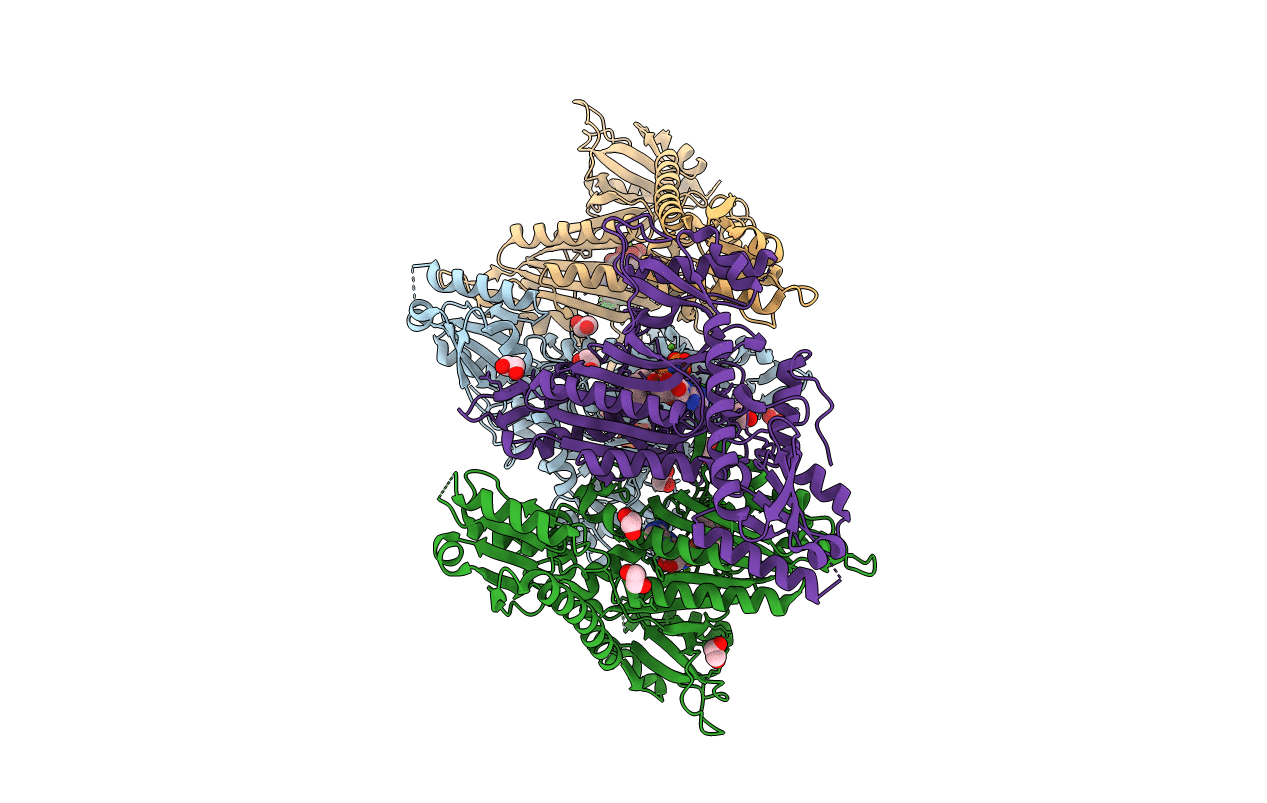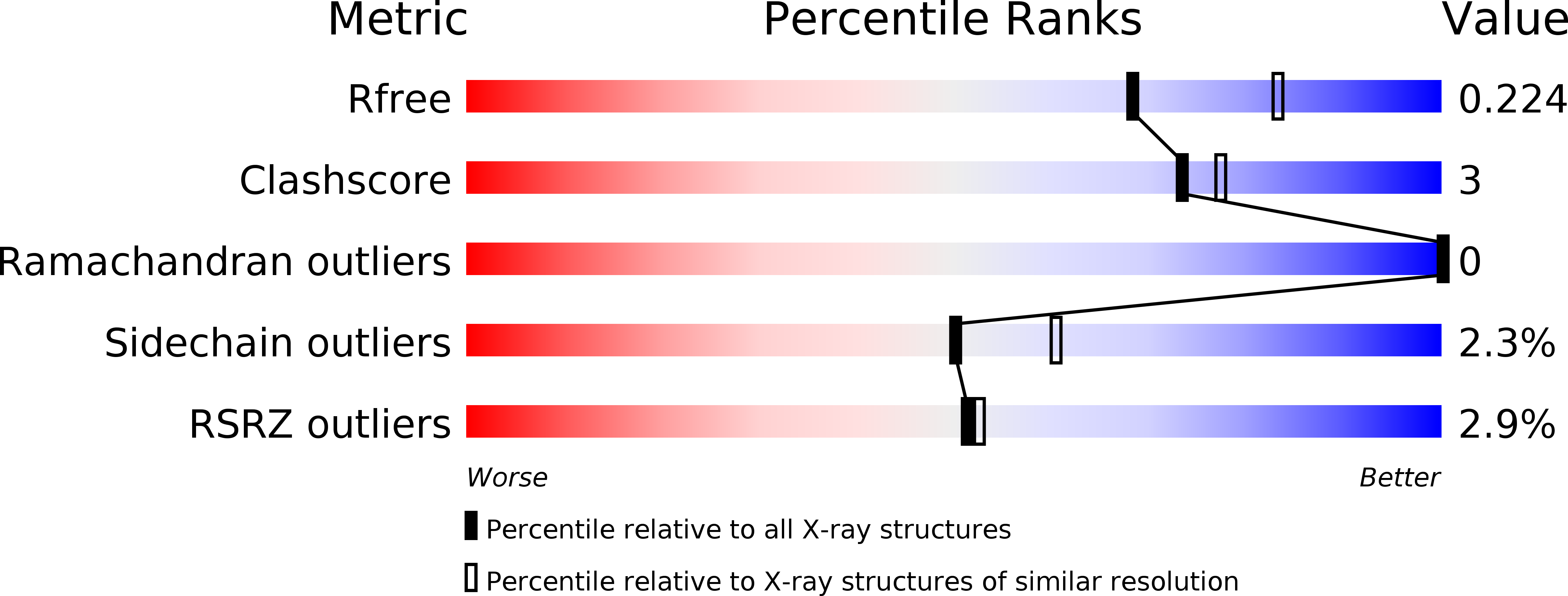
Deposition Date
2017-04-26
Release Date
2018-03-07
Last Version Date
2023-11-22
Entry Detail
PDB ID:
5XII
Keywords:
Title:
Crystal Structure of Toxoplasma gondii Prolyl-tRNA Synthetase (TgPRS) in complex with inhibitor 6
Biological Source:
Source Organism:
Toxoplasma gondii (strain ATCC 50611 / Me49) (Taxon ID: 508771)
Host Organism:
Method Details:
Experimental Method:
Resolution:
2.17 Å
R-Value Free:
0.22
R-Value Work:
0.17
R-Value Observed:
0.17
Space Group:
P 1


